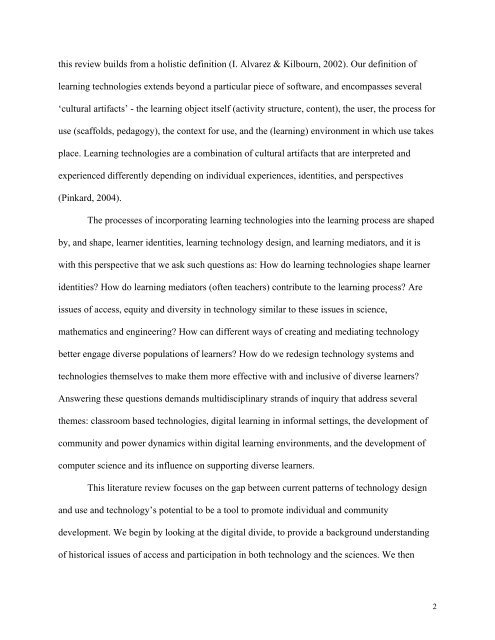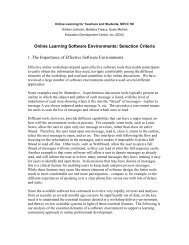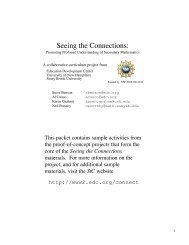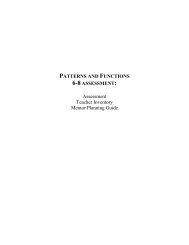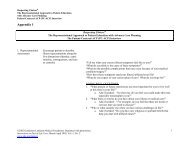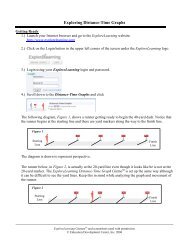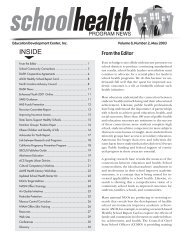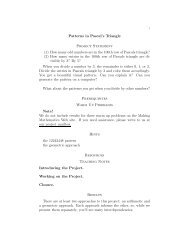It is critical to overcome the digital divide - Education Development ...
It is critical to overcome the digital divide - Education Development ...
It is critical to overcome the digital divide - Education Development ...
You also want an ePaper? Increase the reach of your titles
YUMPU automatically turns print PDFs into web optimized ePapers that Google loves.
th<strong>is</strong> review builds from a hol<strong>is</strong>tic definition (I. Alvarez & Kilbourn, 2002). Our definition oflearning technologies extends beyond a particular piece of software, and encompasses several‘cultural artifacts’ - <strong>the</strong> learning object itself (activity structure, content), <strong>the</strong> user, <strong>the</strong> process foruse (scaffolds, pedagogy), <strong>the</strong> context for use, and <strong>the</strong> (learning) environment in which use takesplace. Learning technologies are a combination of cultural artifacts that are interpreted andexperienced differently depending on individual experiences, identities, and perspectives(Pinkard, 2004).The processes of incorporating learning technologies in<strong>to</strong> <strong>the</strong> learning process are shapedby, and shape, learner identities, learning technology design, and learning media<strong>to</strong>rs, and it <strong>is</strong>with th<strong>is</strong> perspective that we ask such questions as: How do learning technologies shape learneridentities? How do learning media<strong>to</strong>rs (often teachers) contribute <strong>to</strong> <strong>the</strong> learning process? Are<strong>is</strong>sues of access, equity and diversity in technology similar <strong>to</strong> <strong>the</strong>se <strong>is</strong>sues in science,ma<strong>the</strong>matics and engineering? How can different ways of creating and mediating technologybetter engage diverse populations of learners? How do we redesign technology systems andtechnologies <strong>the</strong>mselves <strong>to</strong> make <strong>the</strong>m more effective with and inclusive of diverse learners?Answering <strong>the</strong>se questions demands multid<strong>is</strong>ciplinary strands of inquiry that address several<strong>the</strong>mes: classroom based technologies, <strong>digital</strong> learning in informal settings, <strong>the</strong> development ofcommunity and power dynamics within <strong>digital</strong> learning environments, and <strong>the</strong> development ofcomputer science and its influence on supporting diverse learners.Th<strong>is</strong> literature review focuses on <strong>the</strong> gap between current patterns of technology designand use and technology’s potential <strong>to</strong> be a <strong>to</strong>ol <strong>to</strong> promote individual and communitydevelopment. We begin by looking at <strong>the</strong> <strong>digital</strong> <strong>divide</strong>, <strong>to</strong> provide a background understandingof h<strong>is</strong><strong>to</strong>rical <strong>is</strong>sues of access and participation in both technology and <strong>the</strong> sciences. We <strong>the</strong>n2


